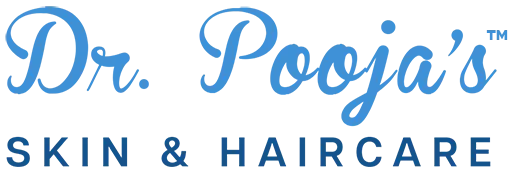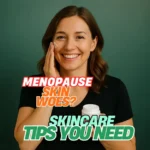Your cart is currently empty!

Teenage acne is a common struggle, impacting about 85% of teens globally, making it one of the most widespread skin conditions among young people. This is a phase when the skin undergoes significant changes due to a surge in hormones, which can lead to clogged pores, inflammation, and breakouts. As a dermatologist, I often see teens in my practice who not only battle the physical discomfort acne causes but also its effects on their confidence and self-esteem.
While acne is common, each teen’s experience can differ in terms of severity and treatment response. Interestingly, studies show that genetics, lifestyle, and skincare habits all play roles in how acne develops and persists in teens. Understanding the unique factors contributing to teenage acne is crucial for effectively managing it, so let’s explore what causes it, why it’s different from adult acne, and how we can tackle it.
Table of Contents
Understanding Teenage Acne
Teenage acne is an almost universal experience during puberty, impacting teens from various backgrounds and lifestyles. It’s largely driven by hormonal changes, which can lead to excess oil production in the skin’s sebaceous glands. Combined with environmental factors and genetics, these changes create the perfect conditions for acne to form.
Differences Between Teenage and Adult Acne
While acne affects people of all ages, teenage acne differs from adult acne in key ways. In teens, acne often appears on the T-zone (forehead, nose, and chin), where oil glands are particularly active. Adult acne, however, tends to show up more around the jawline and neck and is often linked to factors like stress, diet, and hormonal fluctuations that differ from those in teens. Teenage acne also tends to be more inflammatory and involves whiteheads, blackheads, and cysts, while adult acne can be more persistent and challenging to treat.
In my practice, I find that teens often feel frustrated by the sudden onset and intensity of acne during this period. However, understanding that teenage acne is largely a natural phase can help alleviate some of the worry. If you are an adult female, you can read about acne that might affect you here.
Prevalence Among Different Age Groups
Acne is most prevalent in teenagers, especially during early puberty when hormone levels begin to rise significantly. According to research, around 80% to 90% of adolescents experience acne to some degree during these years. This widespread impact is a result of androgen hormones that increase during puberty, which in turn stimulate oil production in the skin.
Acne generally starts in early teens, peaks around 15 to 18 years, and often diminishes by the early twenties. However, for some teens, acne can continue into adulthood. It’s not uncommon for older teens and young adults to seek longer-term solutions as they realise acne doesn’t always resolve on its own.
Common Types of Teenage Acne
Understanding the types of acne is essential for finding the best treatment approach. The main types of acne that teens commonly experience include:
- Whiteheads: Closed pores clogged with oil and dead skin cells, resulting in small, white bumps on the skin.
- Blackheads: Open pores with trapped oil and dead skin that oxidises, leading to black or dark brown dots on the surface.
- Pustules: Small, inflamed pimples filled with pus that often look red and swollen.
- Papules: Raised, red bumps that develop when hair follicles become inflamed.
- Cystic Acne: The most severe type, involving deep, painful cysts filled with pus. This form of acne can lead to scarring and requires medical treatment.
Each type of acne requires a unique approach, and understanding these distinctions helps us create a targeted treatment plan. Many teens may try multiple remedies before finding a combination that works best for them, but they should avoid picking at acne, as it can lead to scarring and further inflammation. In my experience, encouraging teens to stick with a gentle skincare routine and reach out to a dermatologist can make a significant difference in managing symptoms and preventing further breakouts.
While it’s an unavoidable part of growing up for many, early and targeted care can make the experience easier, helping teens feel more confident and empowered in managing their skin health.
Causes of Teenage Acne

Teenage acne can be challenging to manage, and understanding its causes is the first step toward finding effective solutions. Acne occurs due to various factors, primarily tied to hormonal changes, genetic predispositions, skin care habits, and lifestyle choices. Each of these elements can trigger or worsen breakouts in teenagers, leading to the types of acne that dermatologists commonly treat: whiteheads, blackheads, and, in some cases, painful cystic acne.
In my experience, most teenagers who come to me for acne treatment are already frustrated, having tried numerous products without success. But acne is complex, and what works for one person may not work for another. That’s why it’s so important to identify the underlying causes, as they vary from one person to the next. Here’s a closer look at the primary factors that cause teenage acne, along with insights on how these can differ depending on skin type.
Hormones and Puberty
One of the primary reasons acne is so common during the teenage years is puberty, a time when hormone levels surge. During this stage, the body produces more androgens, a group of hormones that include testosterone. Androgens stimulate the sebaceous (oil) glands, causing them to produce excess sebum, an oily substance that protects and hydrates the skin. However, when too much sebum is produced, it mixes with dead skin cells and clogs the pores, leading to breakouts.
I find that hormonal changes are behind many of the cases I see in my practice, especially during the early teenage years when puberty is at its peak. Research has shown that hormonal fluctuations are one of the most significant contributors to acne. In fact, one study found that over 85% of teenagers experience acne due to these hormonal changes.
Skin Care Habits
Many teenagers adopt skincare routines in an attempt to treat acne, but sometimes, these habits can unintentionally make things worse. Over-washing, using harsh products, or experimenting with too many different treatments can strip the skin of its natural oils, causing it to produce even more sebum in response.
In my practice, I often see patients who unknowingly make their acne worse by using abrasive scrubs or skipping moisturiser. These actions can disrupt the skin barrier, making it more prone to inflammation and breakouts. For teenagers, a simple, gentle skincare routine can be more effective than complex routines involving multiple products.
Diet and Lifestyle
Another important aspect to consider is diet and lifestyle. Studies suggest that high-glycemic foods, like sugary snacks and processed carbs, can trigger acne by causing rapid spikes in blood sugar. When blood sugar levels rise quickly, the body releases insulin, which can increase oil production and worsen acne symptoms.
Stress is another factor that can exacerbate acne. I’ve noticed that teenagers facing stressful situations—whether it’s exams, social pressures, or major life changes—often experience more severe breakouts. According to this study, stress can worsen acne by causing the body to release cortisol, a hormone that can trigger increased oil production and inflammation. While diet and stress are not always the primary causes of acne, they can certainly contribute to its severity.
Genetics
Genetics also play a significant role in acne development. If one or both parents had acne, there’s a higher likelihood their children will experience it too. Genetic factors can affect not only the skin’s oil production but also how sensitive it is to hormones.
Many of my teenage patients have parents who struggled with acne as teens or young adults. While genetics alone may not be responsible for their acne, it often creates a predisposition that makes the skin more reactive to other triggers. Knowing family history can help teens manage expectations and understand that their acne may require consistent, longer-term treatment.
How Different Skin Types React to Acne
Not all skin types are affected by acne in the same way, and understanding how different skin types react can help tailor an effective treatment approach.
- Oily Skin: Oily skin tends to produce excess sebum, which easily clogs pores and leads to both blackheads and whiteheads. Many teens with oily skin also experience frequent bouts of cystic acne, which can be painful and more challenging to treat. In these cases, I usually recommend oil-free, non-comedogenic products to help reduce shine without clogging pores.
- Dry Skin: While it may seem counterintuitive, dry skin can also suffer from acne, though it’s usually a different type. Dry skin is prone to flaky patches that can trap bacteria and dead skin cells, leading to inflammatory acne. I advise teens with dry skin to use gentle, hydrating products to avoid further irritation.
- Combination Skin: For teenagers with combination skin, acne can be a bit of a balancing act. They often deal with oiliness in the T-zone (forehead, nose, and chin) but have drier areas on their cheeks. Targeting different areas with appropriate products—such as a lightweight moisturiser on the cheeks and a mattifying gel in the T-zone—can help manage breakouts more effectively.
- Sensitive Skin: Sensitive skin tends to react more intensely to acne products, often resulting in redness and irritation. For these teens, I suggest avoiding products with harsh ingredients like alcohol and focusing on calming, soothing skincare.
Understanding these differences helps teenagers select the right products and make informed choices. Each skin type has unique challenges, and finding an effective routine often requires some patience and experimentation.
Impact of Teenage Acne
Untreated teenage acne can lead to several long-lasting physical effects, often leaving scars not just on the skin but on a teen’s overall well-being. Teenagers visiting me show varying signs of struggling with these impacts, which can become more difficult to manage as acne progresses. Here are some of the common physical impacts I observe:
- Scarring: When acne is left untreated, inflamed blemishes can lead to scarring, including deep pits or raised keloid scars. Many teens feel frustrated when these scars persist long after the acne itself has cleared up. [Studies indicate][link url] that scarring occurs in over 90% of patients with severe acne, making early intervention critical.
- Hyperpigmentation: Dark spots, known as post-inflammatory hyperpigmentation, often appear after a breakout heals. For teens with darker skin tones, these marks can be especially noticeable and may take months—or even years—to fade. [Research highlights][link url] that hyperpigmentation can affect up to 65% of those who experience inflammatory acne.
- Skin Sensitivity and Irritation: Acne treatments can often dry out or irritate the skin, leading to peeling, redness, or heightened sensitivity. This can make it challenging for teens to find products that work without further aggravating their skin. I recommend talking to your doctor or dermatologist if you notice persistent irritation.
- Enlarged Pores: Persistent acne, especially blackheads and cysts, can cause pores to stretch and remain enlarged. This can be a source of self-consciousness for many teens, as they feel it affects the texture of their skin permanently.
By addressing acne early with the right treatment plan, many of these physical impacts can be reduced. However, the less talked about impact is the one I describe next – emotional impact.
Emotional Impact of Teenage Acne

Acne can be more than just a skin issue for teenagers; it often affects their self-esteem, social lives, and even mental health. As a dermatologist, I frequently see young patients struggling with the emotional toll of acne, especially when it’s persistent or severe. They’re not just dealing with visible blemishes—they’re managing feelings of embarrassment, frustration, and sometimes even isolation. In fact, the impact of acne can be long-lasting, sometimes affecting teens well into adulthood.
Impacts of Teenage Acne over Short and Long-Term
For many teens, acne affects them both emotionally and socially. Here’s how:
- Self-Esteem Issues: Teenagers are in a critical stage of self-discovery, and acne can undermine their confidence. [Research shows][link url] that acne is strongly associated with lower self-esteem, making many teens feel insecure and anxious about their appearance. I recall working with young patients who would avoid mirrors or shy away from photos, worried that their acne was the only thing others would notice.
- Social Withdrawal and Loneliness: Acne can lead some teenagers to limit social interactions, worrying about how friends or classmates might perceive them. According to [this study][link url], teens with acne are more likely to experience social anxiety and avoid activities they’d otherwise enjoy, like sports, parties, or events. Many times, patients have shared with me how they withdrew from social circles due to acne, fearing judgement from their peers.
- Mental Health Concerns: Studies increasingly link acne with depression and anxiety among teenagers. It’s not uncommon for teens with moderate to severe acne to struggle with these feelings, particularly when acne persists despite treatments. This emotional strain can sometimes lead to mood changes, irritability, and even depression. I’ve had cases where patients spoke about feeling “trapped” in their skin, not realising that these struggles are common and treatable with the right support and skincare approach.
- Long-Term Emotional Impact: Some teens find that the effects of acne stick with them well beyond high school. The scars left by acne can be both physical and emotional, leading to lasting insecurities. Adults who struggled with teenage acne often report lower self-confidence related to their skin, even if their complexion has cleared up. This experience makes it all the more important to address acne early and openly, as it can reduce the emotional scars that might linger.
Addressing the Emotional Side of Acne
It’s essential for teens dealing with acne, and their families, to know that they’re not alone, and they need not be embarrassed. I recommend talking to a doctor or dermatologist who understands these challenges and can help design a treatment plan that works. Many of my patients feel relieved simply knowing their concerns are taken seriously and that we can work together to address both the physical and emotional aspects of acne.
Open conversations about acne are also important to break the stigma. Encouraging teens to discuss how they’re feeling can help them process the emotional impact and, ultimately, feel less isolated. Support from friends, family, or mental health professionals can make a huge difference in helping teens manage not just their skin but their self-confidence too.
In my view, teenage acne isn’t just a cosmetic concern. It is a real issue that affects millions and deserves empathy more than effective treatment. I believe in addressing it holistically, which will not only help the physical symptoms but also rebuild their confidence.
Effective Treatment Options for Teenage Acne
When dealing with teenage acne, it’s crucial to find treatments that are both effective and gentle on young, often sensitive skin. I’ve worked with countless teens navigating this challenge, and I find that these options offer a solid foundation for managing acne.
- Over-the-Counter (OTC) Treatments: Many teens benefit from ingredients like benzoyl peroxide and salicylic acid, which help clear clogged pores and reduce inflammation. Studies show that these ingredients can significantly reduce acne symptoms over time. For example, researchers found that 85% of teens saw improvements using benzoyl peroxide regularly.
- Prescription Topicals: When OTC options aren’t enough, prescription treatments like retinoids may help. Retinoids work by promoting skin cell turnover and preventing clogged pores. However, these should be used under a dermatologist’s guidance to avoid irritation. According to this study, topical retinoids are one of the most effective options for stubborn acne.
- Lifestyle Adjustments: Managing stress, maintaining a balanced diet, and getting enough sleep can all influence skin health. I often remind young patients that while these changes may not clear acne alone, they support overall treatment and may reduce flare-ups.
- Professional Treatments: In cases of persistent or severe acne, professional treatments like chemical peels, laser therapy, or even oral medications might be necessary. It’s worth discussing these options with a dermatologist who can tailor treatments to specific needs and skin types.
Effective Home Remedies for Teenage Acne
Managing teenage acne can be a journey, but the good news is that several home remedies and lifestyle adjustments can help reduce breakouts. Based on what I’ve seen in my practice, a combination of gentle skincare and some tried-and-true home remedies can offer considerable relief for many teens. Here are some natural remedies you can try at home:
- Gentle Cleansing with Honey and Turmeric
- Honey is a natural humectant and has mild antibacterial properties, making it great for soothing inflamed skin. Turmeric, on the other hand, has been used for centuries in Ayurveda for its anti-inflammatory benefits. Mixing a teaspoon of honey with a pinch of turmeric powder and applying it as a face mask a few times a week may help reduce redness and prevent further breakouts.
- According to this study, turmeric’s active compound, curcumin, has shown promising results in reducing inflammation and bacterial growth on the skin.
- Applying Aloe Vera Gel
- Aloe vera is another wonderful natural remedy known for its calming properties. It’s light on the skin and helps reduce irritation and inflammation. Most patients who use it tell me they feel an instant soothing effect. Applying pure aloe vera gel daily, ideally before bedtime, can help keep acne at bay while promoting hydration.
- Researchers found that aloe vera can reduce the severity of mild to moderate acne due to its antibacterial and anti-inflammatory properties.
- Tea Tree Oil Spot Treatment
- Tea tree oil is well-regarded for its antiseptic qualities. It’s important to dilute it with a carrier oil like coconut oil to avoid any irritation, as it can be strong. Dab a little on active pimples to help reduce their size. A few of my young patients have shared that they saw visible improvement within days of applying diluted tea tree oil directly to the problem spots.
- Simple Lifestyle Adjustments
- Sometimes, acne can be worsened by lifestyle habits. Aim for a balanced diet with limited sugar and dairy, as both can trigger breakouts in some people. Consistent hydration and adequate sleep also play essential roles. Often, I find that teens underestimate the power of these small adjustments.
- Ice Therapy for Redness
- Ice can help reduce swelling and redness, especially for inflamed pimples. Wrapping a cube in a soft cloth and applying it to the skin for a few minutes can bring down puffiness. It’s a quick, affordable trick that can make breakouts appear less prominent.
Remember, every person’s skin is unique, and patience is key. If the acne persists or worsens, it’s always wise to consult with a dermatologist to explore further options.
Preventing Teenage Acne: Proactive Tips for Healthier Skin

Preventing teenage acne might not be entirely possible, as it is a part of growing up, but with a consistent, well-rounded approach, many teens see positive results. From skincare and personal hygiene to diet and exercise, these habits not only improve acne but also contribute to overall skin health.
Skincare and Personal Hygiene
A good skincare routine doesn’t need to be complex but should include cleansing twice a day with a gentle, non-comedogenic cleanser. Over-washing or using harsh scrubs can actually make acne worse by stripping the skin and causing it to produce more oil. I often advise teens or their parents to look for products with ingredients like salicylic acid, which helps clear clogged pores. According to this study, salicylic acid is effective in reducing mild acne and controlling excess oil. Also, washing hands regularly and avoiding touching the face can reduce the spread of bacteria, which often worsens breakouts.
Diet and Hydration
Diet plays a more significant role in skin health than many people realise. Research has linked high-sugar diets with acne, especially in teenagers with a tendency toward oilier skin. Limiting sugary snacks and replacing them with foods rich in antioxidants, like fruits and vegetables, can help. Researchers found that 85% of teens who reduced dairy and high-glycemic foods saw a reduction in acne severity. Hydration is also essential; drinking water throughout the day supports skin function and reduces dryness, which can sometimes worsen breakouts.
Exercise and Stress Management
Physical activity improves circulation, helping skin get the nutrients it needs. Sweating during exercise can clear out pores, but it’s important to cleanse skin afterward. Exercise is also a fantastic way to manage stress, which is a common acne trigger. Many of my patients find that adopting simple relaxation techniques, such as breathing exercises, positively impacts both their skin and overall well-being.
Conclusion
Teenage acne can be a challenging experience, both physically and emotionally. While it’s often influenced by hormonal changes, diet, genetics, and skincare habits, there are effective strategies for managing and even preventing it. As a dermatologist, I’ve seen teens make significant improvements through a combination of gentle skincare, lifestyle adjustments, and, when needed, medical treatments. The key is to find a balanced routine that suits individual needs and to stay consistent with it.
Acne doesn’t need to be a long-term struggle. With patience, expert guidance, and the right approach, many teens find relief from persistent breakouts and gain more confidence in their skin. Don’t hesitate to consult a dermatologist if acne becomes severe or painful—early intervention can make all the difference. Remember, you’re not alone in this journey; help and effective solutions are within reach. You can check out our Kudzu-based Trqois Terra Face Cream which protects your skin and can help with acne.
Frequently Asked Questions
Why does my 14-year-old have so much acne?
Acne at 14 is common because puberty causes hormonal changes that lead to increased oil production, clogging pores and triggering breakouts. Genetics and lifestyle factors, like diet or stress, can also play a role.
How to permanently get rid of acne?
Achieving clear skin involves managing underlying causes, like hormones or skincare habits. Prescription treatments, a consistent skincare routine, and lifestyle adjustments often make a big difference, though results can vary from person to person.
Does teenage acne go away?
Yes, for most people, teenage acne lessens as they get older. Hormones stabilize, and with consistent care, many see clearer skin by their late teens or early 20s. However, some people may need long-term management.
How can a 15-year-old get rid of acne?
For teens, a simple skincare routine with gentle cleansing and using acne-fighting ingredients like salicylic acid or benzoyl peroxide can help. Regular sleep, a balanced diet, and avoiding harsh products also support clearer skin.
What is the most effective acne treatment?
The best treatment depends on the type and severity of acne. Over-the-counter options can help with mild cases, while more persistent or severe acne may require prescription medications, which a dermatologist can guide on.
What are the best foods for acne?
Foods rich in antioxidants, like fruits and vegetables, can benefit the skin. Omega-3 fatty acids, found in fish and nuts, are also known for their anti-inflammatory properties and may help reduce acne.
What to avoid eating for acne?
Avoiding excessive sugar, dairy, and processed foods can be helpful, as they may trigger acne in some people. Everyone’s skin responds differently, so tracking diet and skin reactions can be insightful.
More from the blog
- 5 Powerful Menopause Skincare Secrets Revealed
- 5 Powerful Ways to Stop Teen Hair Fall
- 5 Vital Shopping Tips for Skincare Products
- 5 Effective Solutions for Neck Pigmentation
- 5 Effective Ways to Stop Excessive Sweating (Hyperhidrosis)
Recommended Topics
Popular Tags
40s aging hair care biotin choosing right cobalamin collagen dry itchy skin excessive sweating excess vitamin hair care hair care in 40s hair fall hair health hair loss treatment hydroquinone hyperhidrosis menopause menopause skincare menopause skin care minoxidil neck darkening neck pigmentation perimenopause scalp allergy scalp allergy treatment scalp health shampoo shampooing side effects skin care skincare skincare products skin health sunscreen supplement safety sweating problem teen hairfall teen hair thinning too much sweat tretinoin vitamin b12 vitamin d vitamin overdose washing hair wrinkles












Leave a Reply